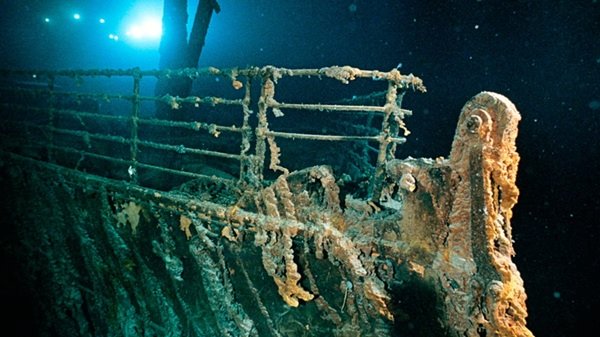Try making some safe bets on Slotsgem and look into what kind of risks other people are willing to face.
It would seem that the story of the Titan—the submersible that tragically sank in June 2023—should have cooled people’s desire to dive to the Titanic for a long time. Everyone on board perished, and the tragedy shocked the world. Yet, only a short time has passed, and news once again emerges of preparations for a new expedition. The question arises: why do people need this? Why, knowing the deadly risks, do they continue to long for that descent—almost 4 kilometers deep beneath the Atlantic waves?
Psychologists say: it’s not just about curiosity.
The Allure of Mystery
The Titanic is not just a ship. It’s a symbol. The liner’s sinking in 1912 became the tragedy of the century, and to this day people see it as something almost mythical. The bottom of the Atlantic holds a vast piece of history, and the thought that you can see the legend with your own eyes is mesmerizing.
Expedition members often say: “It’s like touching eternity.” For them, it’s like coming face-to-face with history. Seeing the Titanic’s decaying structure in person is more than tourism; it’s an intimate encounter with the past.
But there’s another motive too—the desire to be part of something extraordinary. Visiting the Titanic is an experience only a handful can boast of. For many, it feels like entering a secret club that connects them with the most iconic maritime story in human memory.
The Romance of Risk
From a psychological point of view, the attraction of such expeditions is tied to people’s search for intense emotions. In daily life, where everything is predictable, many feel a lack of excitement. And risk, strangely enough, gives life its flavor.
It’s the same as in extreme sports: people skydive, climb mountains, dive into caves. Not because they have nothing else to do, but because risk makes the world more vivid. Standing at the edge of danger forces the body and mind into heightened awareness.
The paradox is that a person is aware of the danger, yet that very awareness is what attracts them. Such expeditions become a test: Will I be able to do it? Do I have the courage? The Titanic dive becomes less about the ship itself and more about facing one’s limits.
The Illusion of Control
Psychologists point out another important factor. People who embark on such journeys often believe that tragedies happen “to others.” There’s an illusion of control: if the technology is improved, if the team is more experienced, then this time everything will end well.
After the Titan tragedy, much has changed: safety requirements were tightened, more serious companies got involved, and public scrutiny grew stronger. This creates the impression among participants: “Now it will be different.”
In reality, deep-sea exploration always involves unknowns. The ocean at 4,000 meters is hostile to human life. Yet the illusion of safety gives adventurers confidence and even justification in their decision to risk it all.
The Desire to Be First
There’s also an element of competition. For many wealthy individuals, such expeditions are not just an adventure but a status symbol. Some collect yachts, others islands, and some—experiences that no one else has.
To go where almost no one has been is to highlight one’s exclusivity. There’s ego in it, and a drive to stand out. Posting a photograph from a descent, telling friends about touching the Titanic’s railings, or simply being able to say “I was there” creates a unique sense of prestige.
In a world where luxury is easily bought, rare experiences become the ultimate currency of status.
A Deeper Psychological Motive
But if you dig deeper, psychologists say it’s about something more fundamental—the human drive to overcome. People have always sought boundaries: climbing Everest, flying into space, crossing oceans. The Titanic has become yet another such boundary.
At times it may look like a senseless risk, but in reality, it’s part of human nature—to go where fear resides. That’s what makes us feel alive. To descend to the Titanic is to face mortality itself: the cold dark waters, the pressure, and the memory of past tragedy. And in facing it, people feel they conquer not only the ocean but their own limitations.
Where Is the Line?
After the Titan disaster, many debated whether such expeditions should be allowed at all. Some argue it’s an unjustifiable risk and that the Titanic should be left in peace, preserved as a maritime grave. Others say that without these attempts, humanity would never push new frontiers or expand the limits of exploration.
The debate reflects a broader question: how much risk is acceptable in the name of progress or adventure? Airplanes once crashed frequently; space travel remains perilous. Yet without those who dared, humanity would not have advanced. The Titanic dives, controversial as they are, fit into that same tradition.
Psychologists are sure of one thing: the thirst for risk can never be fully stopped. There will always be those who want to test themselves and challenge the ocean. And, paradoxically, it is thanks to such people that the world moves forward.
Conclusion
A new expedition to the Titanic is not just a journey to the bottom of the ocean. It’s a reflection of something deeply embedded in human nature: the drive toward the unknown, the desire to overcome fear, to feel special.
Yes, the risk is immense. But it is precisely that risk that makes such expeditions so irresistible. And as long as the Titanic rests at the bottom of the Atlantic, there will always be people willing to dive to it—no matter what.
It may sound reckless, even foolish, but it is also the very spirit that built civilizations, discovered continents, and carried humanity to the stars. The Titanic, silent in its watery grave, will continue to call to those who crave more than safety—those who crave the extraordinary.



